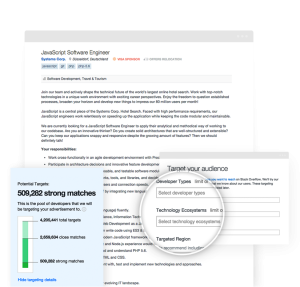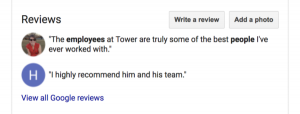I’ve said it before and I’ll say it again: chatbots are a unicorn hack for your Facebook Marketing Strategy.
Facebook Messenger chatbots deliver up to 80% better engagement than other channels (like email marketing or Facebook posts).
Not only does Facebook Messenger marketing deliver more engagement, it also allows you to collect valuable contact information and generate leads.
In terms of paid social, Facebook Messenger chatbot ads deliver up to 50x better ROA.
Facebook Messenger marketing is a win all around.
I’m so confident in its capabilities I actually created the chatbot building platform MobileMonkey so that I can help businesses tap into Facebook Messenger’s unlimited marketing potential.
Early chatbot adopters will edge out their slow-to-move competitors and reap the rewards.
If you’re one of those early adopters and are ready to get started with Facebook Messenger chatbots, here are eight characteristics to bake into your bot.
1. Chatbots Should Use Natural Language
A chatbot that sounds like a robot is a donkey, but a chatbot that sounds like a human is a unicorn.
Even when users know they’re interacting with a bot, they never want it to feel like they’re interacting with a bot.
The best bots use natural language, emojis, and maybe even GIFs.
They are empathetic — as a basic example, if a user has a problem, the chatbot will be able to recognize it as such and offer a very human “I’m sorry!”
2. Chatbots Should be Emotionally Intelligent
It’s not enough for your chatbot to be able to answer frequently asked questions — it has to be emotionally intelligent, as well.
An emotionally intelligent chatbot can sense a user’s mood and respond appropriately, and know when to automatically escalate the chat to a live support agent.
3. Chatbots Should be Smart and Analytical
Smart chatbots are able to drive the conversation forward.
They’re able to predict what a user might need next (based on the prior conversation) and give suggestions whenever possible.
On top of that, the chatbot should be able to respond in multiple languages.
4. Chatbots Should be User-Focused
Whatever the chatbot is designed to do, it should always have the users in mind, first and foremost.
The chatbot should be able to anticipate the users’ needs and next questions, and effectively offer them solutions before they even ask for them.
Facebook Messenger chatbots should also be equipped to offer multiple answers that users can easily tap (no need to even type their response!).
5. Chatbots Should Have a Subscription Feature
Facebook Messenger now allows for subscription messaging (yet another reason why this platform should be integrated in your marketing mix).
Subscription messaging allows businesses to send regular content through Facebook Messenger when the user chooses to opt-in for it.
Your chatbot should be able to schedule these messages periodically.
User should also be able to opt-out easily once they no longer want to receive those messages.
6. Chatbots Should Have Broadcasting Skills
A Facebook Messenger chatbot is so much more than a question and answer tool.
One of the (many) strengths of a chatbot is its ability to broadcast a message to your audience (with an up to 80% open rate within the first 60 minutes!).
When choosing your chatbot software, look for a tool that allows you to “chat blast” many people at once.
Chatblasting will maximize your exposure and ability to engage with customers.
7. Chatbots Should be CRM-Ready
Using chatbots is a great way to make customer relationship management easier.
Implementing chatbots frees up time and labor since the chatbot is able to deftly handle a lot of the incoming queries.
On top of that, look for chatbot software that be integrated with your current systems so they can handle real-time actions (like routine customer password changes and other customer support tasks).
This will turn what would usually be a 12-step process into something simpler, faster and automated.
8. Chatbots Should be GDPR-Compliant
Chatbots should comply with the the General Data Protection Regulations (GDPR), especially if your business is dealing with international audiences.
GDPR was implemented by the European Union in 2018 in an effort to protect customers’ data and privacy.
Not complying with the GDPR entails heavy fines of up to 4% of annual revenues or 20 million Euros, whichever is greater.
To make your chatbot GDPR-compliant, make sure you use personal data only for stated purposes only and always give users access to their information.
Update your privacy policy accordingly and always do your best to comply with GDPR and its practices.
Now you know exactly what capabilities to look for when it comes to choosing chatbot software, and what characteristics to endow your bot with. What are you waiting for?! Go build your bot.
Originally Published on Inc.com
Digital & Social Articles on Business 2 Community
(25)






